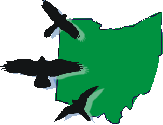Basic Training
Though much of the equipment has been modernized, the basic method of training a hawk for falconry has not changed since the early days. The general philosophy is to condition the hawk to accept the falconer as a partner in the hunting process while maintaining its natural physical condition and hunting instincts. Training is accomplished through careful weight management, positive reinforcement, and repetition.
The first step in training entails a period known as “manning”. It is during this time that the hawk begins to overcome its fear of people, becomes accustomed to the falconer, and learns to associate food with the falconer’s glove.
